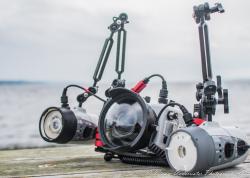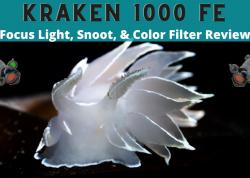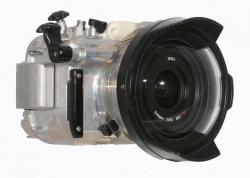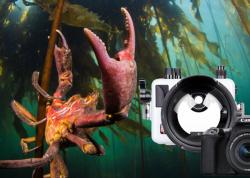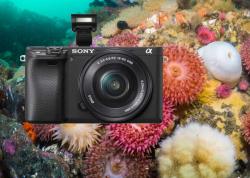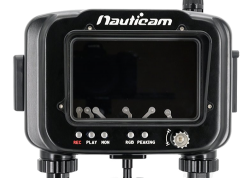Sony A9 III Review

The Sony A9 III is Sony's newest full-frame mirrorless camera that ushers in a new era of photo technology with the introduction of the global shutter. It presents unique benefits to underwater photographers, including the ability to capture photo with strobes at shutter speeds up to 1/80,000! While the $6000 price tag for the body may be too high for many, we can only expect continued innovation in the camera market to come. Until then, is the A9 III worth the upgrade? If you want complete control over your underwater lighting, it very well could be.
In order to put the a9 III's global shutter to the test, we chose to bring the camera on a blackwater dive as well as a shallow dive in the mid-day sun. Both scenarios benefit considerably from shutter speeds higher than shutter sync speeds that limit performance on other full-frame mirrorless cameras. We used the Ikelite a9 III housing for the review, and we expect more Sony a9 III underwater housings to be released soon.
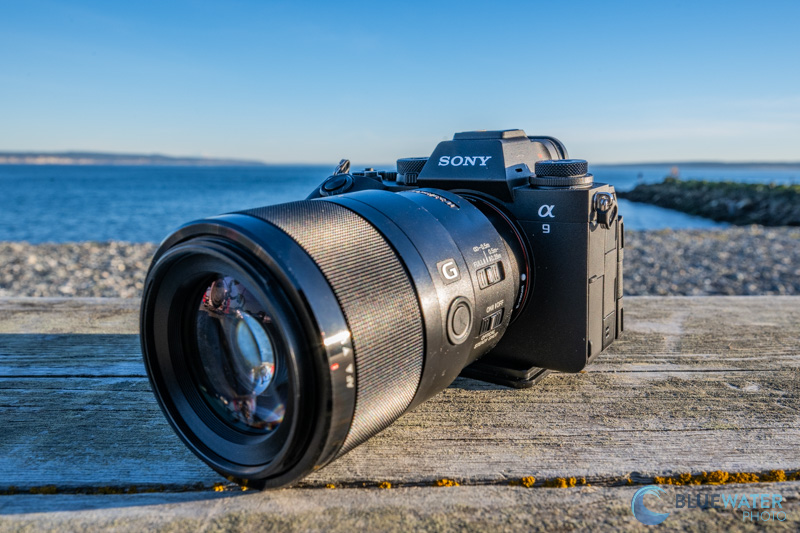
Purchase a Sony a9 III underwater housing at Bluewater Photo:
View All Sony A9 III Underwater Housings
Order an Ikelite a9 III Housing
Order a Marelux a9 III Housing
Order a Nauticam a9 III Housing
Order a Aquatica a9 III Housing
Read Bluewater's Top Underwater Settings for the Sony a9 III
Jump to a Section
Sony a9 III Specs | Explaining Global Shutter | Sony a9 III Key Features
Underwater Video | Underwater Housings | Best Lenses
- 24.6 megapixel stacked full-frame CMOS sensor
- First full-frame camera with a global shutter
- 1/80000 max shutter speed and flash sync speed
- 120 autofocus calculations per second
- 120 fps 14-bit RAW burst shooting
- Native ISO of 250
- 4K/120p recording with full width of the sensor
- 4K/60p recording oversampled from 6K for more detail
- -5 EV lowlight autofocus sensitivity
- Electronic shutter only
- 8 stops of 5-axis in-body image-stabilization
- Weight: 617 grams
- Size: 136.1 x 96.9 x 72.8mm
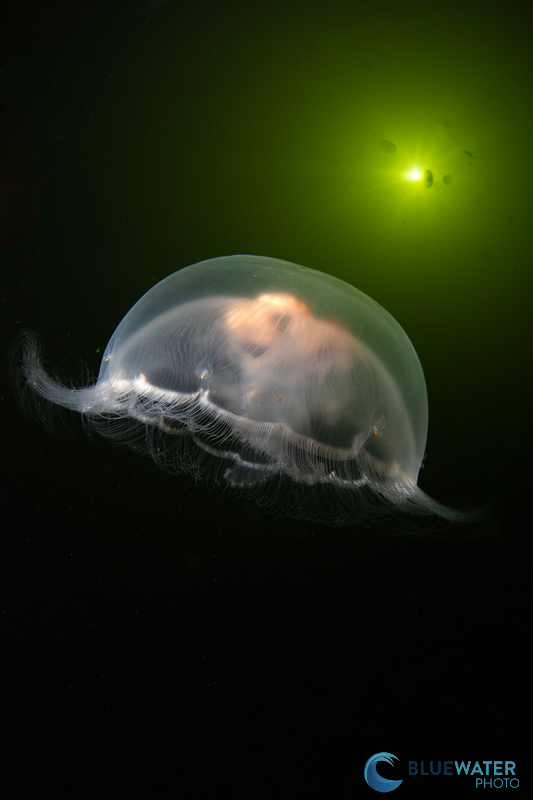
What is a "Global Shutter"?
"Global shutter" might sound like just another marketing term introduced by sales-hungry camera manufacturers. But it's a true technological innovation. A global shutter is when each pixel on a camera's sensor captures image data simultaneously and sends it to the processor on the camera. Traditional full-frame mirrorless cameras, including the Nikon Z8 and Sony a7R V, use a rolling shutter where the sensor records image data from top to bottom. Rolling shutter can lead to limitations like "warpy" distortion when recording fast moving subjects as well as shutter speed limitation with external storbes (i.e., sync speeds).
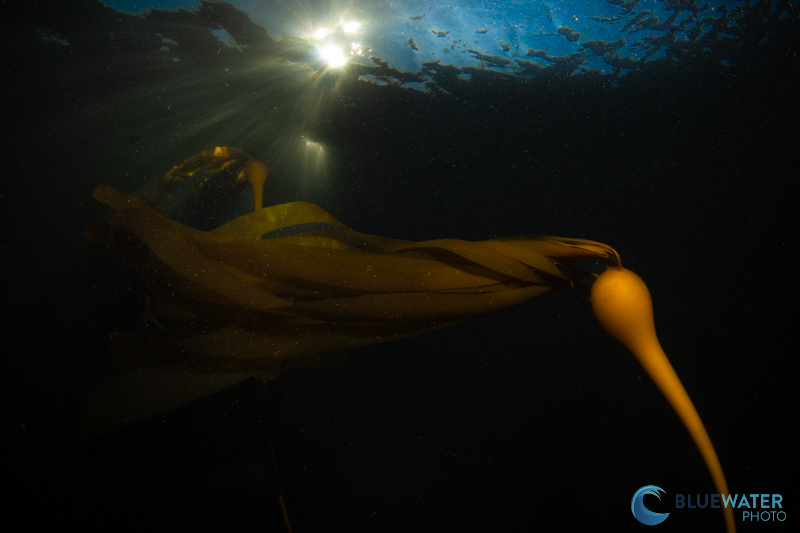
The Benefits of a Global Shutter
With improvements in camera processing power, the global shutter is a feature we've been anticipating as it has the potential to truly change underwater photography. Now that it's here with the a9 III - it's validating to see just how much it changed my shootig style. The Sony a9 iii has essentially eliminated the flash sync speed limitation where underwater photographers used to be limited to about 1/160-1/25th of a second when shooting with strobes. As we mentioned, the a9 III can capture flash photos up to the max shutter speeds of 1/80,000 of a second. This allows underwater photographers to eliminate excessive ambient light when shooting into the sun and more easily capture sunballs. It also allows us to freeze fast moving subjects to reduce motion blur and more easily produce black backgrounds. Finally, ultra fast reedout speeds from the sensor allow a9 III users to shoot burst photos in RAW up to 120 frames per second. While most strobes can't currently handle these kinds of speeds, if you plan to shoot without strobes, it's impossible to miss a moment when photographing quick animals like sharks and marine mammals.
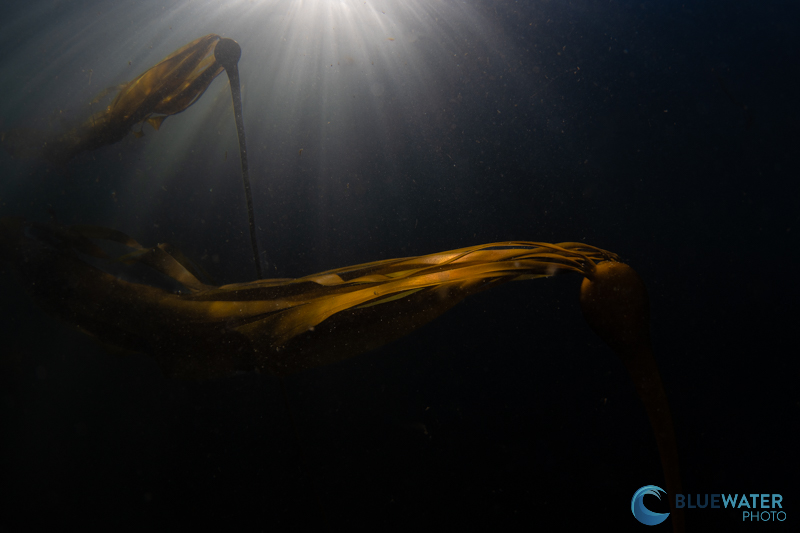
TTL Considerations
While we were testing the Sony a9 III we found an interesting limitation to the "unlimited" sync speed. Because flash TTL (roughly equivalent to automatic strobe mode) requires calculations on the part of the camera, the sync speed on the a9 III drops to 1/500 of a second when you attach a TTL converter or TTL flash trigger to the camera. Even if the converter is in manual mode, the camera will still think a TTL flash is connected. So if you want the benefit of shooting at shutter speeds higher than 1/500 of a second, you will need to shoot with manual strobes.
If you intend to shoot with a TTL converter, there really isn't much of a benefit to using the Sony a9 III over other cameras like the Nikon Z8 or Canon R5. This is because the native ISO on the a9 III is ISO 250, so you are essentially limited dynamic range as if you are using a camera with a native ISO of 100 and a sync speed of 1/250. That said, a higher shutter speed does freeze the subject.
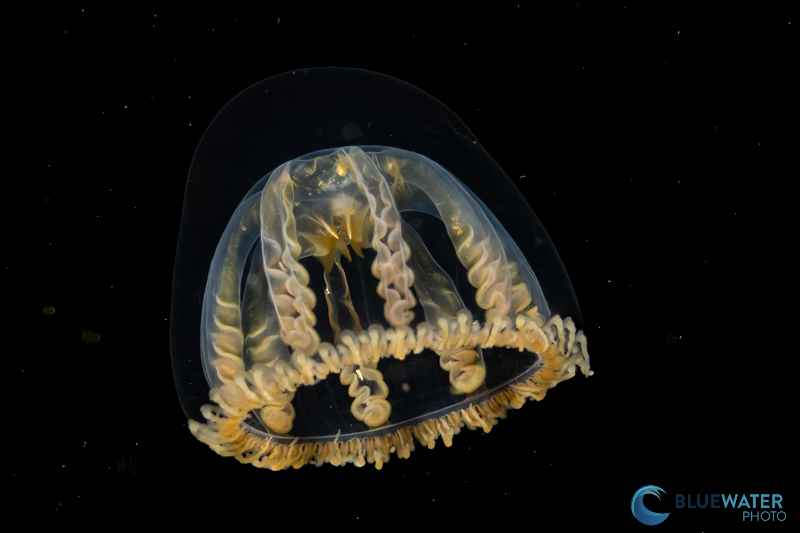
Sony A9 III Key Features
Record Breaking Burt Shooting Speeds
With incredible processing capability, the Sony a9 III can shoot 14-bit RAW photos up to 120 frames per second. It's necessary to have a memory card with fast write speeds, like Sony Tough CFExpress Type A, in order to unlock this feature. For photographers looking to capture baitballs, sharks, dolphins, whales, or dogs jumping into pools, there is no better camera for the job.
For underwater photographers using strobes, most strobes won't be able to fire faster than 30fps. Even then, there are only a few strobes like the Sea & Sea YS-D3 Mark IIs, Ikelite DS 232s, and the Marelux Apollo III strobes that can reach those speeds.
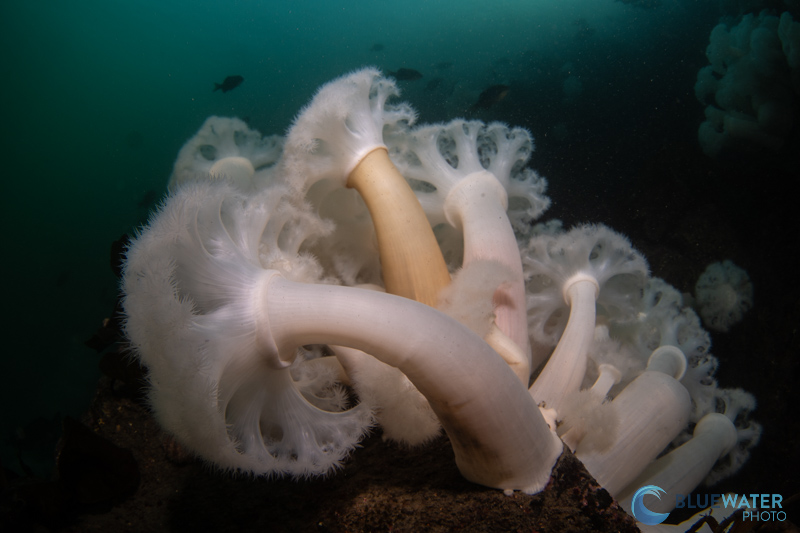
Lighting Quick Autofocus
Another benefit of incredible processing power is the a9 III's autofocus system which is the fastest on the market. The A9 III also has a dedicated AI Autofocus processor that uses machine learning to improve autofocus speed and accuracy. The camera can do 120 autofocus calculations per second, allowing it to match its burst shooting speed.
Overall, we found the autofocus performance to be indestinguishable from the Sony a7r v. On paper, the a9 III should perform slightly better, but we put the camera through difficult focusing situations like blackwater diving - so it was hard to tell if it was any better.
Image Quality
Some photographer's might be put off by the a9 III's lower resolution 24.6 megapixel sensor. That said, I find that 24-25 megapixels is often the "sweet spot" on full-frame sensors when it comes to low light performance and image quality. It's more than enough resolution for wide angle photography, and only the heaviest cropping macro photographers will likely feel limited by it.
We were able to go blackwater diving with the camera, and significantly crop our images of tiny jellies and shrimp. We might not blow the images up to the size of a billboard, but they are sufficient for 20x30 prints and the internet.
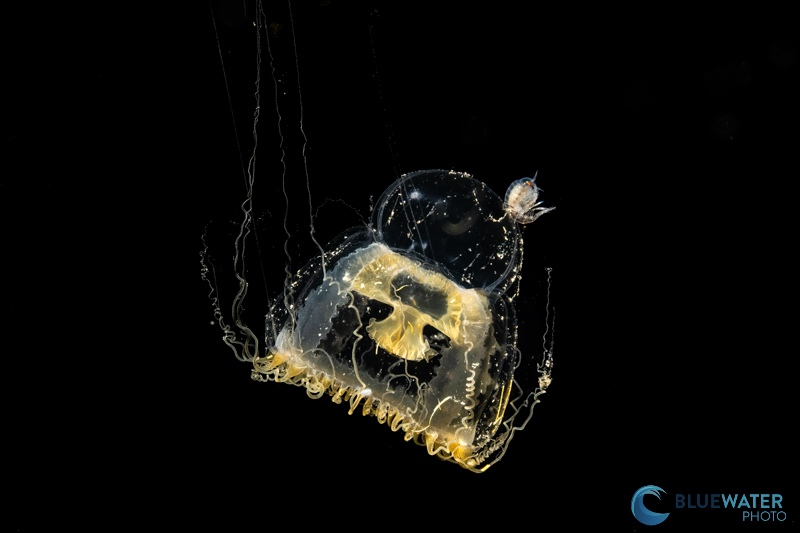
Dynamic Range Limitations
The stacked sensor design of the Sony a9 III does yield itself to some dynamic range limitations with the overall dynamic range lowered by 1.5 stops as compared to cameras like the Sony a7 IV. The native base ISO on the camera is 250 rather than 100. In our tests, we could see some limitations in the quality of the highlights and the amount of details that were recoverable. But this is subjective opinion as we didn't run our own dynamic range tests on the photos themselves. But as you can see in the photos above, for most people the dynamic range of 11.7 stops is going to be more than sufficient.
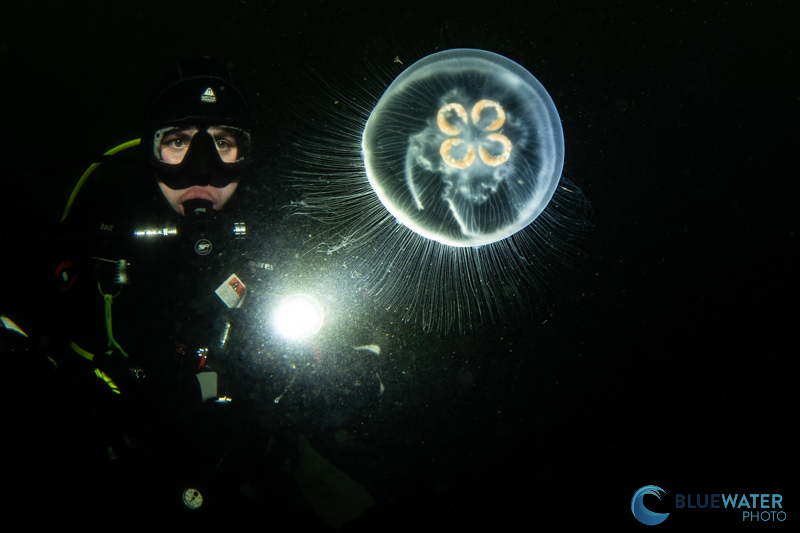
Battery Life
While the battery life of the Sony a9 III is rated for 500 shots, we found that the camera lasted about 2.5 dives. Perhaps lower than expected performance is related to the processing power needed for quick shooting and autofocus. But the published battery life does not seem to measure up to the camera. We recommend changing out the battery every two dives.
Sony a9 III for Underwater Video
While the Sony a9 III is not marketed to underwater videographers, if you are a hybrid shooter, you'll find the a9 III to be more than sufficient. The obvious benefit of the global shutter to underwater video shooters is the ability to capture video without rolling shutter - the warpy look that can happen if you move your camera too quickly. But because most underwater video should be as still as possible, most underwater shooters don't need to deal with rolling shutter anyway.
The Sony a9 III is capable of filming 4K video up to 120 frames per second using the full width the the sensor and 4K video oversampled from 6K up to 60 frames per second. The camera is equipped with all of the common Sony log profiles for Log recording. We were quite happy with the quality of the oversampled footage at 60fps which we slowed down in the video.
Sony a9 III Underwater Housings
Currently, there is an excellent polycarbonate Ikelite Sony a9 III housing option available and an anodized Nauticam Sony a9 III housing option available. Check out the Bluewater housing guide for the Sony a9 III for future underwater housing updates. We expect additional housings to come out for the a9 III from Marelux and Aquatica.
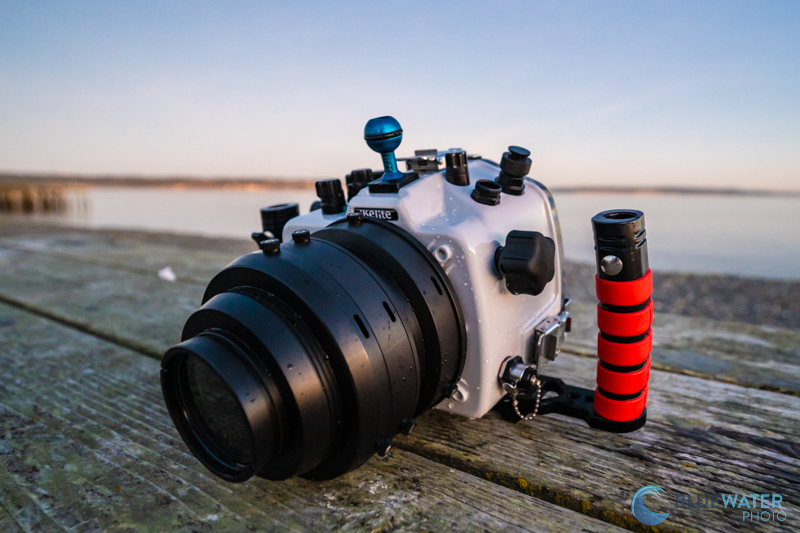
Sony a9 III Underwater Lenses
Best Wide-Angle Lenses
The Canon 8-15mm fisheye lens with the Sigma MC-11 adapter is the fisheye option for most wide angle shooters with the Sony a9 III. I found the autofocus to be effective, though not as fast as a Sony native lens. The metabones adapter can be used with the Canon 8-15mm fisheye lens as well. However, the autofocus is slower. The one benefit of the metabones over the Sigma MC-11 is that it can autofocus in video mode - albeit, I found the autofocus to be almost unusable when shooting video. There is an exciting new Sigma 15mm E Mount Fisheye Lens that is native to the Sony E mount, but we are currently waiting for port chart updates and our first underwater review of the lens.
For both photo and video, the Sony 16-35mm F4 Lens with an 8-inch dome or larger is an excellent choice. There are also some great wet wide-angle lenses available such as the Nauticam Wet Wide-Angle Lens or the Kraken KRL-01 Wet Wide-Angle Lens that can be used with the Sony 28mm Prime Lens. The Sony 28mm prime lens also works well with a Fisheye Conversion Lens to capture even wider shots of large reefscapes.
If you're looking for the most versatile wide-angle Sony set up for underwater shooting, the Sony FE 28-60mm F4-F5.6 Lens behind a flat port with zoom capability paired with the Nauticam WWL-1B Wide-Angle Wet Lens is the way to go. The downside is that it's currently only compatible with Nauticam and Marelux housings.
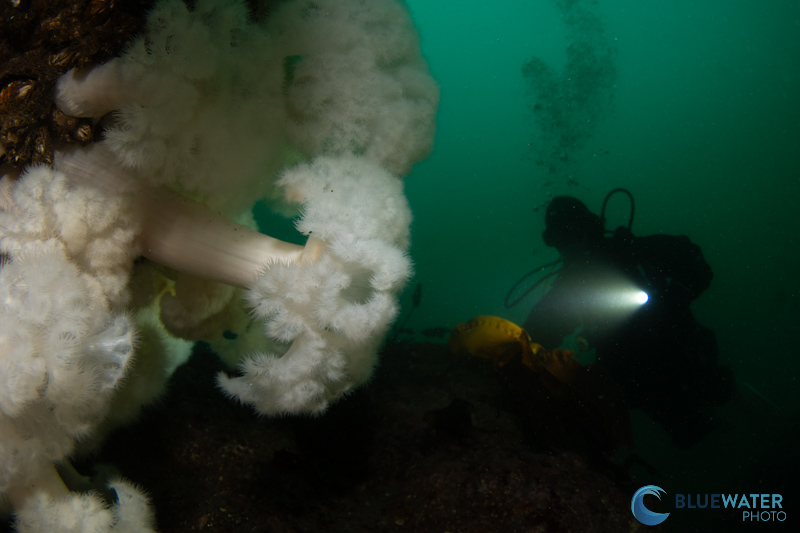
Best Mid-Range Lenses
The Sony 28-70mm F3.5-F5.6, the Sony 24-70mm F4 and the Sony 35mm F2.8 portrait lens are three good mid-range options.
Best Macro Lenses
There are two native Sony lenses that we think are good macro options for the a9 III: the Sony 90mm and 50mm Macro. The 90mm has a faster autofocus motor, and the 50mm macro is quite slow to autofocus. Unless you need to photograph subjects larger than a golf ball, we typically recommend the Sony 90mm macro over the Sony 50mm macro. Recently, we reviewed the Sigma 105mm F/2.8 DN DG Art Macro Lens. It's an excellent and more affordable option to the Sony 90mm with better image quality. However, it is not a great choice for video due to focus breathing. We already mentioned the Sony FE 28-60mm F4-F5.6 Lens and how it makes a great wide-angle option when used with a wide-angle wet lens, but combine it with the Nauticam Compact Macro Converter CMC-2, and it becomes a very versatile and highly capable macro set up too.
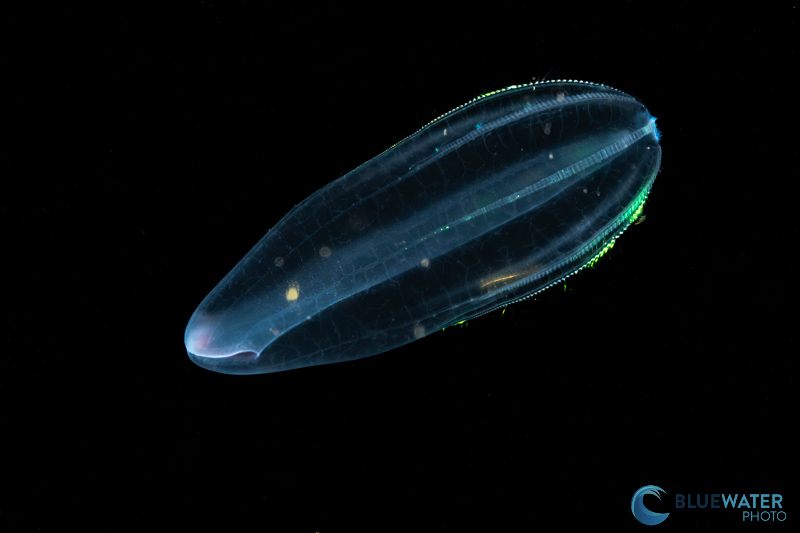
Canon Lenses for the Sony A9 III
Canon lenses can be attached to the Sony a9 III with the Metabones, Sigma MC-11, or Photodiox adapters, but auto-focus is generally better with Sony lenses. Lenses like the Canon 8-15mm, 16-35mm, 17-40mm, and 100mm can work well.
Conclusions
The Sony a9 III is the beginning of a new era in underwater photography. With a global shutter spearheading the technological revolution, we anticipate more global shutter cameras to follow. While the price point and limited resolution of the a9 III might be a let down to some underwater photographers, there is no doubt that this camera offers you the most control over your underwater lighting than any others on the market. If you are looking to break the limitations of a strobe sync speed and take complete control of the ambient light in your photos, there is no other tool than the a9 III.
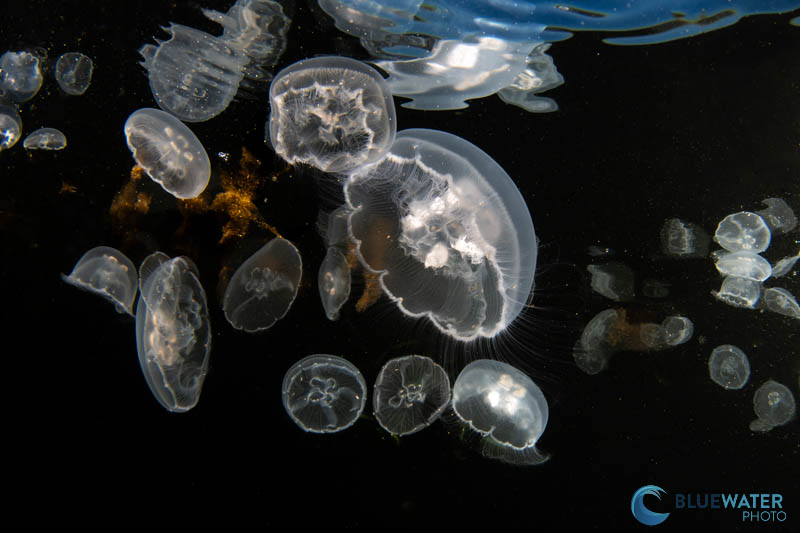
RECOMMENDED ARTICLES
SUPPORT THE UNDERWATER PHOTOGRAPHY GUIDE:
The Best Service & Prices on u/w Photo Gear
 Visit Bluewater Photo & Video for all your underwater photography and video gear. Click, or call the team at (310) 633-5052 for expert advice!
Visit Bluewater Photo & Video for all your underwater photography and video gear. Click, or call the team at (310) 633-5052 for expert advice!
The Best Pricing, Service & Expert Advice to Book your Dive Trips
 Bluewater Travel is your full-service scuba travel agency. Let our expert advisers plan and book your next dive vacation. Run by divers, for divers.
Bluewater Travel is your full-service scuba travel agency. Let our expert advisers plan and book your next dive vacation. Run by divers, for divers.




